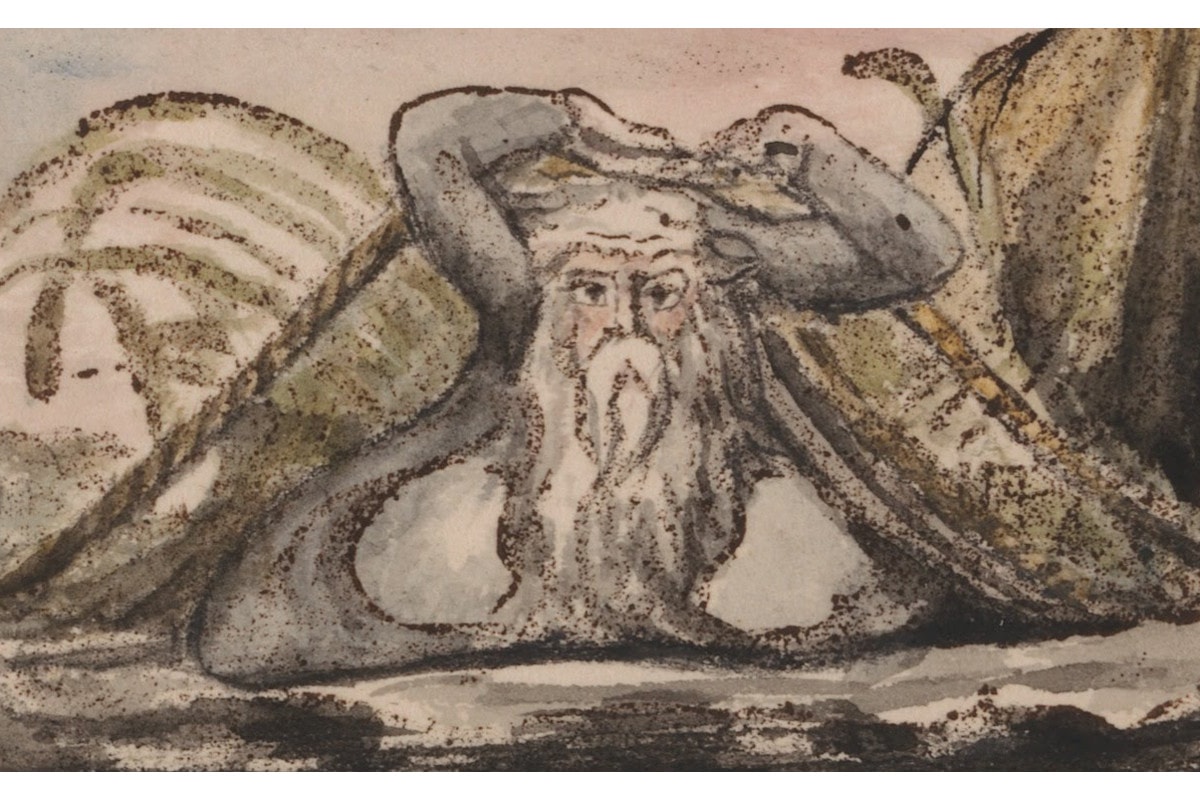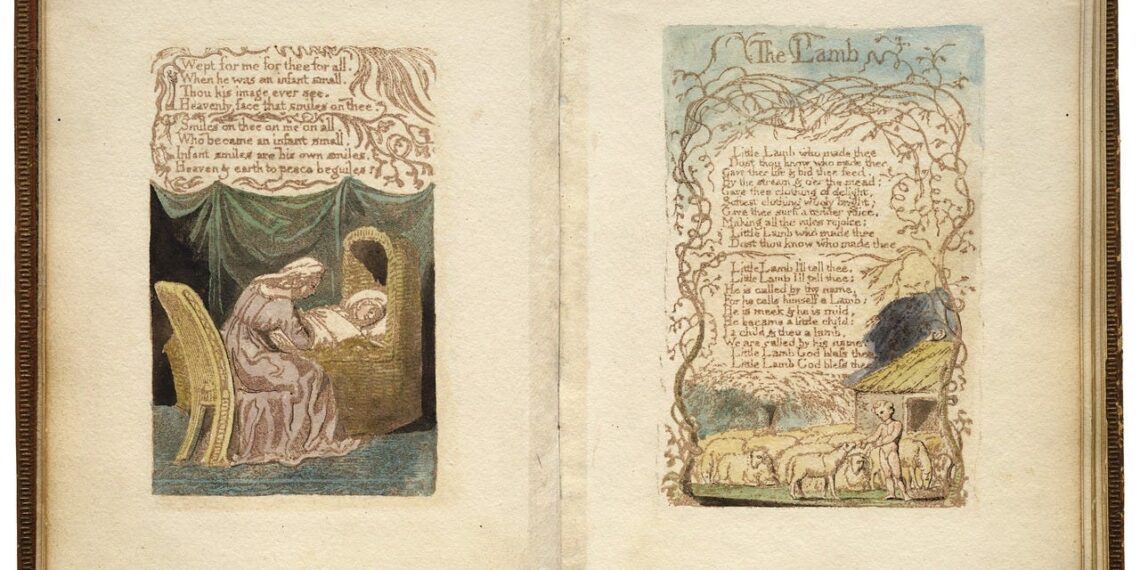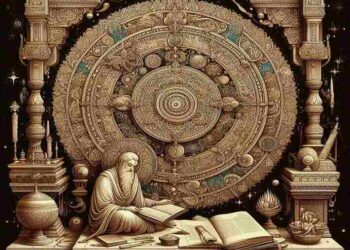Introduction
Unraveling Symbolism In William Blakes Poetry One of the most inventive and mysterious poets in the English literary canon is still William Blake (1757–1827). Blake is most recognized for his imaginative poetry, art, and philosophy-fusing works. His writing is frequently both difficult and uplifting, with complex meanings and deeply ingrained symbolism.
Blake’s use of symbolism is what really distinguishes and lends his poetry a timeless aspect, even though his lyrical contributions have long been valued for their spiritual insight and daring critique of social conventions.
In this article, we will delve into the symbolism within Blake’s poetry, examining how his symbolic language challenges conventional thought, elevates spiritual concepts, and criticizes social and political structures. We will explore the recurrent themes and motifs in Blake’s works, from the relationship between innocence and experience to his critique of organized religion, the industrial revolution, and human oppression.
1. Blake’s Visionary Worlds: A Duality of Innocence and Experience
One of the most significant symbolic themes in William Blake’s poetry is the tension between innocence and experience. These two contrasting states of being are most explicitly explored in Blake’s Songs of Innocence and Songs of Experience, two collections of poetry published in 1789 and 1794, respectively. These works explore the journey from pure innocence—associated with childhood, spirituality, and harmony—with the darker, more complex realm of experience, which encompasses adulthood, societal corruption, and a loss of innocence.
Innocence and Experience as Symbols
In Blake’s symbolic world, innocence represents a state of purity, simplicity, and divine connection. The poems in Songs of Innocence feature childlike voices and pastoral imagery that evoke themes of peace, harmony, and a direct relationship with God. In contrast, Songs of Experience portrays the suffering, corruption, and moral complexity that arise from exposure to the world’s injustices and realities.
A powerful example of this symbolism can be seen in Blake’s poem The Lamb from Songs of Innocence. The lamb, a symbol of Christ and purity, serves as a representation of innocence, gentleness, and divine creation. In contrast, The Tyger from Songs of Experience presents an image of the ferocious tiger, a creature that symbolizes the awe-inspiring, yet dangerous and mysterious aspects of experience.
Read More
Symbolism of Opposites: Blake’s Contradictory View
Blake’s use of these dualities is a central symbolic feature throughout his work. The juxtaposition of innocence and experience isn’t meant to imply that innocence is purely good and experience is entirely bad. Instead, Blake views them as interdependent, recognizing that one cannot exist without the other. He acknowledges the loss of innocence but suggests that this loss can lead to growth and deeper understanding, although it often comes with suffering.
Blake’s belief in the interconnectedness of these two realms represents his broader views on the human experience: life, he suggests, is both beautiful and painful, and to understand one must encounter the other. His symbolism of innocence and experience encourages readers to embrace complexity and understand life’s contradictions.

2. The Critique of Organized Religion: Blake’s Symbolism of Tyranny
Blake’s poetry often critiques organized religion, particularly the Church of England, which he saw as an institution that distorted the true teachings of Christ. This theme is most clearly presented in his works The Marriage of Heaven and Hell and Jerusalem. Blake’s symbolism targets the hypocrisy and oppressive nature of institutionalized religion, which he believed shackled human freedom and imagination.
The Symbol of the “Priest” as Oppressor
In Blake’s works, priests often appear as symbols of oppression, representing the false authority that controls spiritual life. In The Marriage of Heaven and Hell, for instance, the figure of the priest becomes a symbol of repression and conformity. Blake contrasts the priesthood with the figure of the prophet, who represents the visionary, unrestrained pursuit of truth and spiritual freedom.
Blake believed that organized religion suppressed creativity and stifled the human spirit, turning individuals into passive followers rather than active participants in their own spiritual growth. Through symbols like the tyrannical priest and the serpent (often representing evil or false authority), Blake calls for a return to personal spirituality and a rejection of oppressive structures.
The Symbolism of Heaven and Hell
In The Marriage of Heaven and Hell, Blake explores the symbolic union of opposites, where “Heaven” and “Hell” are not separate domains but are integrated aspects of human existence. In this work, Blake subverts the traditional religious notion of Heaven as good and Hell as evil. Instead, he presents a more nuanced view where both Heaven and Hell are necessary forces in the development of the human soul. Heaven represents the passive, rational, and ordered aspect of life, while Hell represents passion, rebellion, and creativity. For Blake, both realms contribute to the individual’s spiritual journey.
By integrating these opposing symbols, Blake presents a vision where religious orthodoxy and authority are challenged, and a new, more fluid understanding of spirituality emerges.
3. The Symbolism of Nature and the Industrial Revolution
Blake was a vocal critic of the Industrial Revolution, which he viewed as a destructive force against the natural world, the human soul, and the innocence of childhood. In poems such as London, The Chimney Sweeper, and Holy Thursday, Blake critiques the social and environmental consequences of industrialization.
The Symbol of the “Chimney Sweeper”
The image of the chimney sweeper, a young child forced to work in the filthy chimneys of London, becomes a powerful symbol of exploitation and innocence lost. In his poem The Chimney Sweeper (from Songs of Experience), Blake paints a grim picture of the child’s suffering under the harsh system of industrial labor. The child’s body becomes symbolic of the wider exploitation of the working class during the Industrial Revolution, and Blake uses this symbol to critique both the social and moral consequences of industrialization.
In contrast, Songs of Innocence features the child’s carefree voice, but even here, the innocence of the child is often tinged with a sense of impending loss. In Songs of Experience, Blake gives voice to the suffering child, calling attention to the brutal realities that industrial society imposes upon the most vulnerable.
The Symbol of the “Dark Satanic Mills”
Blake’s famous line “Bring me my bow of burning gold” from Jerusalem is a plea for resistance to the forces of industrialization. The term “dark satanic mills” is often interpreted as a symbol for the dehumanizing, soul-crushing nature of industrial work. In Blake’s view, these mills represent not only the physical machinery of the industrial age but also the societal structures that prioritize profit over humanity and the environment.
Blake’s symbolic use of nature, then, is deeply entwined with his critique of industrial society. The lush, fertile landscapes and spiritual purity found in his poetry contrast sharply with the artificial, mechanized world that industrialism has created.
4. The Symbolism of Vision and Imagination
One of the most striking features of Blake’s work is his emphasis on the imagination as a divine force, capable of transcending the material world and connecting humans to spiritual truths. Blake believed that the power of the imagination was not only essential for creativity but also central to understanding the divine.
Read More
The Visionary Poem and Symbolism
Blake’s own personal visions were a major influence on his poetry and art. He often used symbolic language to express these visionary experiences, portraying the world as an interconnected, mystical web of divine forces. The “visionary” quality of Blake’s work challenges the distinction between fantasy and reality, encouraging readers to see beyond the physical world and experience the hidden spiritual truths.
In poems like The Marriage of Heaven and Hell and The Song of Los, Blake used symbolic imagery to create a universe where human imagination and divine creativity are bound together. The imaginative realm becomes a space where opposites can be reconciled, and where humanity can find spiritual liberation.
5. The Symbol of the “Contraries”
Blake’s philosophy of the “contraries” is a core aspect of his symbolic worldview. He believed that true wisdom and spiritual enlightenment arise from the reconciliation of opposites. The symbols of good and evil, innocence and experience, or Heaven and Hell, are not seen as oppositional forces but as necessary counterparts that define each other and together contribute to spiritual understanding.
The Contraries in Blake’s Works
This notion of contraries can be seen in Blake’s symbolic exploration of dualities in works like The Marriage of Heaven and Hell, where he argues that the rejection of one side (whether it be reason or passion, innocence or experience) leads to imbalance and spiritual stagnation. For Blake, the contraries are not in conflict but should coexist to provide a full understanding of the world.

Conclusion
William Blake tackles deep spiritual, political, and philosophical topics in his poetry, which is full of symbolic meaning. Readers are prompted to reevaluate the nature of reality, the divine, and the human experience by his distinctive symbolic language.
Blake creates a universe where the lines between the material and spiritual realms blur via the use of religious symbols, nature, imagination, contraries, and symbols of innocence and experience. This world provides insight into the intricacies of human existence. Deciphering these symbols gives us a timeless commentary on human nature in addition to a deeper comprehension of Blake’s vision.
Read More
FAQ
1. What is the significance of symbolism in William Blake’s poetry?
Symbolism in Blake’s poetry is a critical tool that allows him to communicate deeper spiritual and philosophical insights. By using symbols, Blake can critique social issues, explore complex emotions, and present his vision of the world as a unified, interconnected place that transcends the material.
2. What does Blake mean by “Innocence” and “Experience”?
In Blake’s work, “Innocence” refers to a state of purity, spiritual connection, and untainted perception of the world, often symbolized by children. “Experience,” on the other hand, represents the loss of this purity, often through exposure to suffering, oppression, and societal constraints. Blake sees both as necessary aspects of the human condition and emphasizes their interdependence.
3. How does Blake critique religion in his poetry?
Blake critiques institutionalized religion, particularly the Church of England, by symbolizing it as an oppressive force that distorts true spiritual experience. He contrasts religious authority with visionary prophets who seek personal spiritual truths and emphasize individual freedom and creativity.
4. How does the symbolism in Blake’s poetry reflect his views on industrialization?
Blake uses symbols like the “chimney sweeper” and the “dark satanic mills” to critique the dehumanizing aspects of industrialization. He sees industrialization as a force that exploits the poor, destroys nature, and diminishes human creativity and spiritual connection.
5. Why is imagination so important in Blake’s work?
Imagination is central to Blake’s philosophy, as he views it as a divine and liberating force. It allows individuals to transcend the material world and access higher truths. Through the imagination, Blake believes people can experience spiritual freedom and enlightenment.



